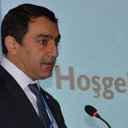Cranial imaging findings in neurobrucellosis: results of Istanbul-3 study.
Ključne riječi
Sažetak
OBJECTIVE
Neuroimaging abnormalities in central nervous system (CNS) brucellosis are not well documented. The purpose of this study was to evaluate the prevalence of imaging abnormalities in neurobrucellosis and to identify factors associated with leptomeningeal and basal enhancement, which frequently results in unfavorable outcomes.
METHODS
Istanbul-3 study evaluated 263 adult patients with CNS brucellosis from 26 referral centers and reviewed their 242 magnetic resonance imaging (MRI) and 226 computerized tomography (CT) scans of the brain.
RESULTS
A normal CT or MRI scan was seen in 143 of 263 patients (54.3 %). Abnormal imaging findings were grouped into the following four categories: (a) inflammatory findings: leptomeningeal involvements (44), basal meningeal enhancements (30), cranial nerve involvements (14), spinal nerve roots enhancement (8), brain abscesses (7), granulomas (6), and arachnoiditis (4). (b) White-matter involvement: white-matter involvement (32) with or without demyelinating lesions (7). (c) Vascular involvement: vascular involvement (42) mostly with chronic cerebral ischemic changes (37). (d) Hydrocephalus/cerebral edema: hydrocephalus (20) and brain edema (40). On multivariate logistic regression analysis duration of symptoms since the onset (OR 1.007; 95 % CI 1-28, p = 0.01), polyneuropathy and radiculopathy (OR 5.4; 95 % CI 1.002-1.013, p = 0.044), cerebrospinal fluid (CSF)/serum glucose rate (OR 0.001; 95 % CI 000-0.067, p = 0.001), and CSF protein (OR 2.5; 95 % CI 2.3-2.7, p = 0.0001) were associated with diffuse inflammation.
CONCLUSIONS
In this study, 45 % of neurobrucellosis patients had abnormal neuroimaging findings. The duration of symptoms, polyneuropathy and radiculopathy, high CSF protein level, and low CSF/serum glucose rate were associated with inflammatory findings on imaging analyses.



